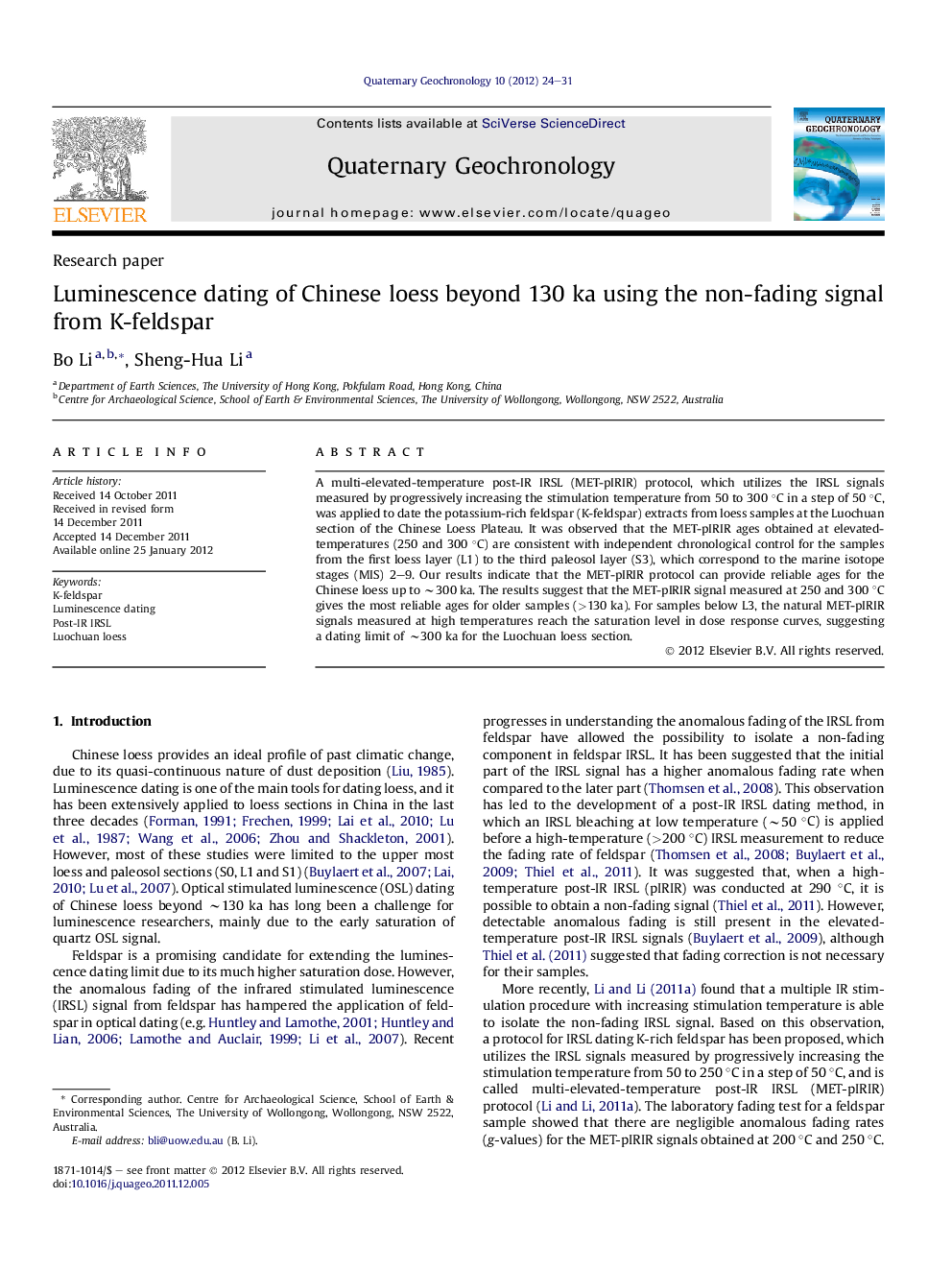| Article ID | Journal | Published Year | Pages | File Type |
|---|---|---|---|---|
| 4725096 | Quaternary Geochronology | 2012 | 8 Pages |
A multi-elevated-temperature post-IR IRSL (MET-pIRIR) protocol, which utilizes the IRSL signals measured by progressively increasing the stimulation temperature from 50 to 300 °C in a step of 50 °C, was applied to date the potassium-rich feldspar (K-feldspar) extracts from loess samples at the Luochuan section of the Chinese Loess Plateau. It was observed that the MET-pIRIR ages obtained at elevated-temperatures (250 and 300 °C) are consistent with independent chronological control for the samples from the first loess layer (L1) to the third paleosol layer (S3), which correspond to the marine isotope stages (MIS) 2–9. Our results indicate that the MET-pIRIR protocol can provide reliable ages for the Chinese loess up to ∼300 ka. The results suggest that the MET-pIRIR signal measured at 250 and 300 °C gives the most reliable ages for older samples (>130 ka). For samples below L3, the natural MET-pIRIR signals measured at high temperatures reach the saturation level in dose response curves, suggesting a dating limit of ∼300 ka for the Luochuan loess section.
► We dated the K-feldspar from loess samples at the Luochuan section of the Chinese Loess Plateau. ► The K-feldspar ages are consistent with independent age control for the samples from L1 to L3. ► The MET-pIRIR protocol can provide reliable ages for the Chinese loess up to ∼300 ka.
